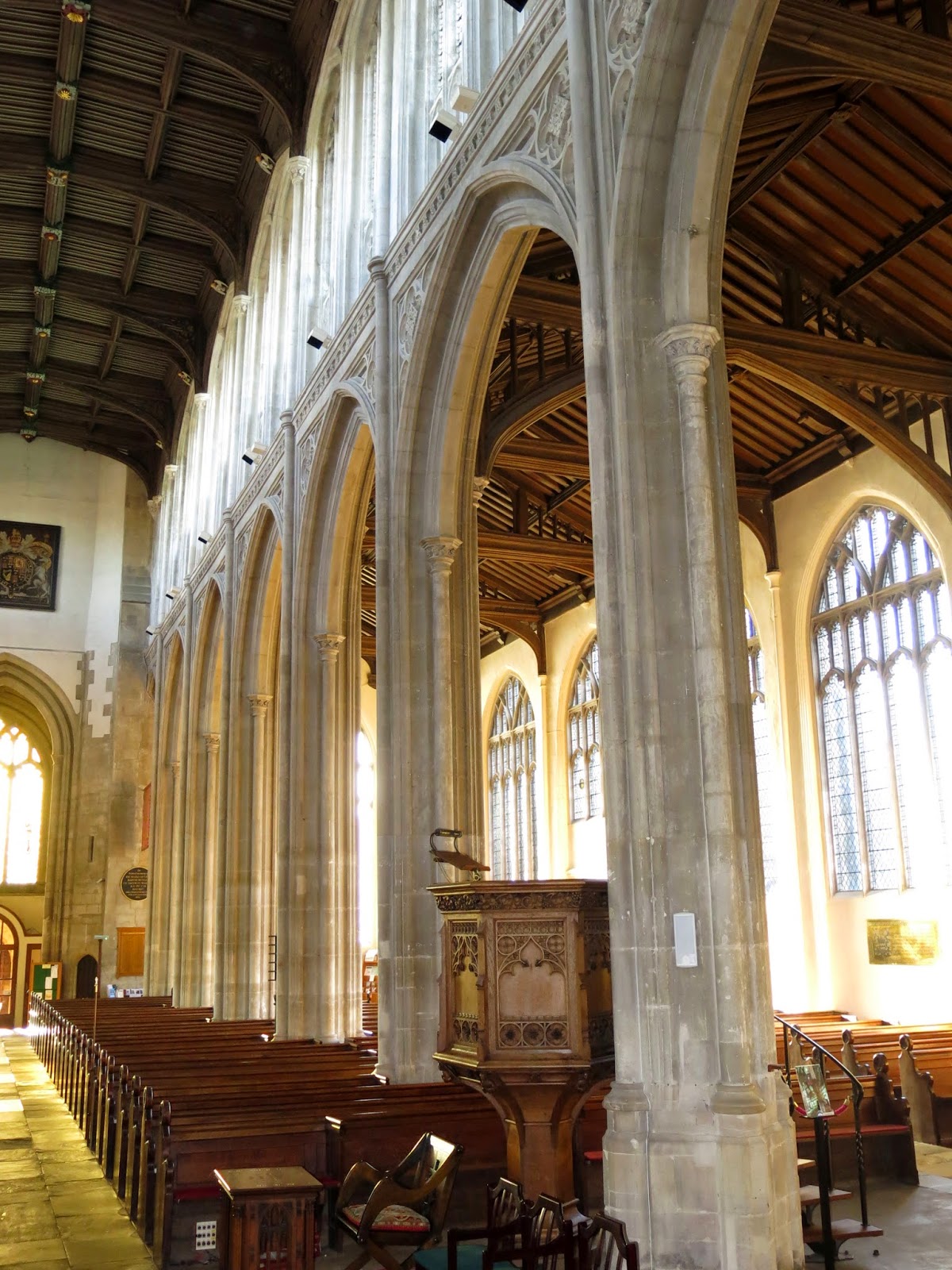Historic Churches Crawl
After three joyful days of singing in Coventry Cathedral, but windy, dull and wet as far as the weather was concerned, a glorious day of church
crawling from Cambridge. Although the area around Cambridge is rather built up,
the countryside is very attractive and scattered with interesting villages. On
a bright and sunny day, although very cold, it was a joy to drive around.
Our first stop was Babraham church, hidden along
a country lane and not visible from the road. It belonged to Babraham Hall, a
large Victorian estate, now housing an important research institute of
Cambridge University. Unfortunately the church was locked, the key holder not
answering her phone.
So we left without having seen the interior which according to Jenkins[1]
has box pews, a remarkable memorial and a modern but striking stained glass
window which was partly visible through one of the windows. It lies next to a
pretty gurgling stream, now festooned with early snowdrops. Unfortunately
concrete buildings have sprouted all around, spoiling what could have been a
very arcadian place.
Our next stop was Duxford, a delightful English village
which has two Anglican churches, St. John’s and St. Peter’s. St.
John’s is now redundant and under the care of the Churches Conservation Trust. It
stands high on the village green. After
collecting the key at one of the nearby houses and opening the heavy door, the interior
was quite a revelation. Especially the wall paintings and the massive Norman
arches are impressive. The wall paintings depict saints, devils, angels and
strange creatures, as well as decorative edgings. The space seems a bit
unpractical for worship.
St. John's
St. John's
Left: Stairs to the rood loft Right: the decorated roof beams
One of the attractive houses surrounding the church
The nearby St Peter’s is now the local church but seemed less interesting.
Above: St. Peter's Duxford
We went on to Ickleton, to St. Mary Magdalene.
The church borders the village green, which is surrounded by brightly coloured
houses. The spire is worth looking at, as it has an unusual outside bell, suspended
from the top of the spire under its own canopy. I had never seen that before.
Inside there are some treasures. To begin with glorious wall paintings, which
only were discovered when cleaning the walls after a fire. Besides there are
beautiful carved bench ends, and an original, brightly painted rood screen. The
setting is very peaceful and I think I could easily live here, or in any of the
other villages.
Carved bench ends
Ickleton village green
It was time for lunch, so we drove further south to the Fighting Cocks, where we
expected to feast on good food. However, no food on Mondays and Tuesday and
this of course was Tuesday. But the barman referred us to another pub, the Fleur de Lys a bit further south in
Widdington. This oxblood red stucco pub was indeed very attractive and quaint,
and they did have good food, all prepared with local products they claim.
However, on Tuesday the landlord did the cooking and the chef had his day off,
so it took over an hour of waiting before we got our food as the pub was packed
mainly with groups of women and hikers. Since we still had some more churches on
our list, my friend was on tenterhooks. But it didn’t really matter, as we were
having a good time anyway.
After a very late and but well cooked lunch we went back
north to Saffron Waldon, a most attractive market town. The church, St. Mary’s, is the largest
village church in Essex and towering over the town on a hill. It is very
impressive and amazingly high. It was difficult to capture the height on
camera. The town was busy as it was market day and many buildings on the market
square were partly hidden by market stalls. Here
is a site with photo’s of Saffron Waldon which are much better than mine. It
still has its historic centre and streets, and looks very attractive. Besides,
it boasts of having three mazes, of which I saw only one being the floor of the
bandstand. It was too late to explore Saffron Waldon further, as it was getting
dark. But it is definitely worth another, longer visit.
Saffron Waldon Village church
The door of the building above where Oliver Cromwell is siad to have lodged
The Market Square












































Many thanks for writing about St John's Duxford. I hope you won't mind I tweeted a picture and the link from the @TheCCT twitter account.
ReplyDeleteI loved that church! It is so authentic. Also the situation is idyllic. The pictures are just taken with a small camera without flash, so nothing professional here I am afraid. Still, happy you liked the post.
Delete